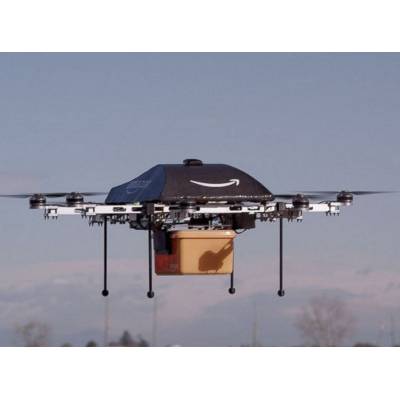How confident are you that your business could survive a data disaster of any size and scale, from a single misplaced file to a complete loss of your entire onsite infrastructure? Being prepared to recover from any version of events is key to your business’ success. Let’s discuss this concept, which is widely known as IT resilience.
Directive Blogs
Remote work has been crucial to many businesses as they work to sustain themselves throughout the COVID-19 pandemic. However, as businesses have adopted these new methods of operation, it has become clear that remote work is likely to be much more than a survival tactic moving forward. Let’s look to a recent survey to see how remote work is influencing these businesses.
Many businesses have found it extremely hard to cope with restrictions levied by lawmakers because of the COVID-19 pandemic. This has sent business owners and decision makers looking for solutions to their revenue problems. The most popular solution is to automate some of the work that was typically done by human resources to try and slice some of the demands on their capital. Today, we will tell you how automation is here to stay in business.
Businesses are now in the process of reopening. While there are sure to be growing pains and setbacks, this also provides an opportunity for these businesses to make many adjustments and improvements to how they operate. As you reignite your operations (or make the preparations to), it will help to do so with the support of modern technology and the processes it enables.
As time passes and technology is developed, a lot of the processes that businesses rely on become more efficient and stand to deliver greater benefits to the organizations that use them. These benefits are accessible to businesses of all sizes, including small businesses. Let’s go over a few small business needs, and how technology can assist with them.
As much as we hate to admit it, the first thing that many people still think of when they hear the term “tech support” is the experience that comes with an antiquated approach to technology services: the break/fix method. Fortunately for us, we are seeing many businesses make the better decision, and turn to the clearly superior option, managed IT.
Blockchain is one of the most dynamic new technologies, but up until recently, there hasn’t been a lot accomplished in the way of creating viable distributed software titles. In fact, the most practical technology created with blockchain is cryptocurrency. This says quite a bit. Today, we’ll take a look at blockchain-enhanced software and how it’s only a matter of time until it is a commonplace addition to most businesses.
Augmented reality has been one of the most cited emerging technologies for the past few years. It was the technology that was supposed to fuel Google Glass, the failed attempt at creating a pair of revolutionary smart glasses. Since then, there hasn’t been much press about AR in the mainstream media and not much is known about major tech companies’ attempts to improve AR technology.
New technology can be extremely exciting, but for any business, it can be kind of scary. Implementing technology that isn’t completely established is a major gamble that could have multiple negative impacts. On the other hand, sometimes early adoption of emerging technology will give a business just the boost it needs to blow past projections. Today, we will look at three emerging technologies that the small to medium-sized business will have to consider in the near future.
For most businesses, technology has a major role in what they do. They use it in all manners of ways, but there is no question that it has become a driving force for business. As the calendar flips to a new decade, we thought that it would be good to take a look at what the 2010s brought us, and what to expect in the 2020s.
There have been people talking about the oncoming AR trend for almost a decade now. Google Glass was supposed to revolutionize technology as we know it, but due to security and privacy concerns, it has never come to pass. AR is, however, a growth market and applications for the technology are growing rapidly. Today, we’ll take a look at augmented reality, and what to expect from the technology in the coming years.
We typically use this blog to share information about the technology that a business should be leveraging - but in this blog, we’ve decided to focus on a different group that is increasingly reliant on technology: students. As these pupils will someday make up the workforce and almost certainly utilize technology on a daily basis, it is important that their education reflects this increase in their curriculums. Here, we’ll consider some of the effects (good and bad) that this has had.
Without a doubt, the Internet is one of humanity's most impressive inventions. 50 years ago, the predecessor to the Internet that most of the world depends on, called ARPANET, was launched. Today, we will talk about how that innovation turned into the Internet, and reorganized the way people interacted with computing systems.
Technology changes rapidly, whether we like it or not. Most of the time, that change is beneficial; you can get more done, gain more visibility, stretch your resources further, and do things you wouldn’t have thought possible (or at least affordable) a few years ago. Other times, technology changes come with the frustration of having to learn something new, develop new processes, and deal with a cavalcade of other annoyances that just make you want to go back to ‘simpler’ times. Today we’re going to talk about how to prepare you and your organization for the inevitable changes that your IT will be facing over the next few years.
Planning for your business’ future is a critical activity to carry out, and we aren’t just talking about next quarter. You need to be sure that you are ready to accept that today’s status quo isn’t permanent. Your business or your position should grow, which means that you and your employees are going to need to embrace more responsibility and authority, exploring different roles.
We hope we aren’t dating ourselves too much by mentioning computer punch cards, but they were once the means of inputting data into a computing device… at least, until the now-ubiquitous mouse and keyboard came into the scene. This variety of interfacing with our devices now seems to be one of the few ways to practically use them. However, other interfaces have emerged - do any of them stand a chance of unseating the keyboard and mouse?
Blockchain is one of the most popular emerging technologies, and it’s easy to see why. While the technology behind blockchain was once looked at as having no practical application in the workplace, it is now taking a seat front and center as a security tool for a modern business environment. Let’s take a look at what’s going on in the world of blockchain.
Does anyone remember computer punch cards? Does this date us? Either way, since computing punch cards went the way of the dinosaur, there has been some version of the keyboard and mouse as we know them today. These interfacing tools have become so ingrained into our minds that it is frankly difficult to imagine a computer without them... But this begs the question, will there ever be a user interface impressionable enough to replace them?
Technology is taking on a new role for the modern business. With more value placed on data, and new innovations presenting viable options for business use, technology is now front and center for many organizations. We’ll discuss four of the most emerging technologies and how businesses are beginning to use them.
If your business is one that depends on transportation, you know that coordination is extremely important. With consumers’ reliance on a company’s distribution arm, today’s companies are turning old practices on their heads and utilizing a more technology-driven approach to effectively manage their company’s transportation initiatives. This technology is innovating quickly and could mean a major transformation for businesses before too long. Today, we’ll go through three innovations that are working to change how transportation-dependent companies do things.
Virtual assistants have a lot of promise as a productivity tool, so it only makes sense that they would begin to appear in the workplace. Unfortunately, these devices have also gained a reputation as a security risk. Whether or not you’ve considered bringing virtual assistants into your business, you need to prepare for their presence there.
The healthcare industry has been trying to make the jump to digital for over a decade. While many practices have been able to successfully implement electronic health record (EHR) technologies, a full digital transformation has eluded many others. Nowadays, providers are actively searching for ways to achieve measurable results with these newer technology implementations. Today, we take a look at the healthcare industry’s IT as it stands in early 2019.
It’s a familiar scene from many science fiction properties: a person approaches a locked door. They unlock it, but rather than using a key, a red beam scans their eye to confirm their identity and permit them access. The thing is, this and similar biometric authentication technologies are likely to begin appearing in real-world businesses sooner than later. Let’s discuss:
Technology innovation in the workplace is something that is constantly shifting and changing, depending on what’s hot at any specific time. These days, it might seem like office technology innovation is stagnating, but we assure you that it’s still constantly improving. We’ll walk you through some of our favorites to improve data accessibility and workplace productivity as a whole.
When it comes to innovation, you’d be surprised at what you might be capable of with the right solution. Collaboration in particular opens the floodgates to productivity, and with the right kind of collaborative and innovative technology, you’ll be able to unlock a whole new level of progress for your business. We’ll discuss some of the most important aspects of innovative collaboration and how your business can start taking advantage of it.
If your business uses technology to be more productive and efficient, you know that as soon as you buy a piece of new technology, there is another one right behind it that has more power, or better features. This is true for consumers as well. This constant innovation is what has made technology a viable option for many small businesses. After all, if computers hadn’t been innovated on constantly, they’d still be the size of a room (or wouldn’t exist at all).
For those who don’t know, the term information technology is an encompassment of the technology used in the facilitation of rendering, sharing, and storing data. Any piece of technology that is used to process, keep, send, and secure digital information, is considered IT. Today, we will look at some of the emerging technologies presenting solutions for businesses and individuals, alike, heading into 2019.
How would you like to be able to charge your smartphone by simply walking down the street? Or to be able to turn the tie you’re wearing into a voice-recognition security system? Thanks to a team at Michigan State University, these abilities may not be so out of the question, as they have developed a promising little device that could be used to achieve these goals and many others.
At the International Consumer Electronics Show (CES), new products (and the technologies that fuel those products) are put on display to give industry professionals a look to see what companies are working on. At CES 2018, held in Las Vegas, Band and Olufsen introduced their speakers-as-art-concept, Samsung unveiled a 146” television that is designed to take up a wall, and many companies, including Aura, introduced new smart home security products that are sure to get an intruder’s attention (over Wi-Fi).
Information technology has always been a hotbed for future predictions. Whether it was Marconi’s grand plans for wireless communications or the bold prediction that every person would be carrying around a computer that fits in the palm of their hand, the future always looks bright when new technologies are considered. But, what does the immediate future of information technology hold?
At Google I/O 2018, the latest occurrence of Google’s convention for developers, a stunning new technology was demonstrated to those in attendance. Called Google Duplex, it adds a new level of utility and capability to the Google Assistant, in that it enables the Google Assistant to make phone calls on the user’s behalf that are almost indistinguishable from human conversation.
Humankind has always adapted and improved technology to make life easier, starting all the way back at fire and the wheel. Nowadays, our approach to making life easier through technology is centered around productivity and security - if we can accomplish more than before in the same amount of time, without worrying that it will be stolen, we’re happy.
Children are the future, as the saying goes, so do we really want the future to be taught using tools from the past? While some schools are still using technology that better belongs in the 20th century, others are embracing innovation and teaching in ways that better translate to the “real world.” Let’s take a look at how our evolving technology is transforming the classroom and explore some ways to get it to more students.
As of this point, the vast majority of our experience with the Internet of Things has been on a small scale - accessories and appliances that connect to the Internet to gain some added functionality. This technology can also be applied to a larger, more civic purpose - the development of something called a “smart city.” Unfortunately, this application could prove to be as problematic as the IoT we are more accustomed to.
New technology paves the way for businesses to leverage their resources in exciting ways. Of course, it’s impossible to take advantage of these benefits if you don’t even know these new technologies exist. Therefore, to help you achieve an edge over your competition, consider how these four new technologies can enhance your business model.
You might see 3G and 4G on your mobile devices and wonder what it all means. If so, we have an answer for you, and just in time for a brand-new iteration: 5G. With this new technology on its way, it’s time to take a look at what exactly 5G should be capable of, and how it can differentiate itself from its predecessors.
 The 1990s were a golden time of technology with VHS, floppy disks, and beige computing hardware aplenty. Back then, learning of new technology shortcuts was totally rad. Although, looking back, many of these cool tech tips are now obsolete. Yet, they still hold a special place in our hearts. Here are some of our favorite technology tips from the ‘90s. Which ones do you remember?
The 1990s were a golden time of technology with VHS, floppy disks, and beige computing hardware aplenty. Back then, learning of new technology shortcuts was totally rad. Although, looking back, many of these cool tech tips are now obsolete. Yet, they still hold a special place in our hearts. Here are some of our favorite technology tips from the ‘90s. Which ones do you remember?
 Data storage is such an important part of today’s business environment, but when was the last time you took the time to consider technologies that came before? Technology that exists today couldn’t possibly have existed 50, or even 20 years ago. How have the leaps and bounds made in the tech industry affected the status of data storage, and what does this trend mean for small and medium-sized businesses?
Data storage is such an important part of today’s business environment, but when was the last time you took the time to consider technologies that came before? Technology that exists today couldn’t possibly have existed 50, or even 20 years ago. How have the leaps and bounds made in the tech industry affected the status of data storage, and what does this trend mean for small and medium-sized businesses?
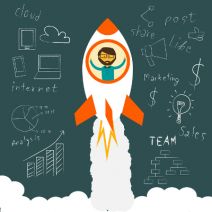 Every time that you purchase a new piece of business technology, you’re faced with a choice: go with a product that’s been around for awhile, and thus, is cheaper, or pay a little extra for the latest solution. We like to encourage business owners to go with the latest tech because it saves them money in the long run - an IT concept known as “future proofing.”
Every time that you purchase a new piece of business technology, you’re faced with a choice: go with a product that’s been around for awhile, and thus, is cheaper, or pay a little extra for the latest solution. We like to encourage business owners to go with the latest tech because it saves them money in the long run - an IT concept known as “future proofing.”
 By its nature, technology is always changing, evolving, and moving forward. Organizations that understand this and plan for these changes end up making the most out of their technology. Those that don’t, get left behind. Here are three ways to make sure that your company’s technology will best serve your future needs.
By its nature, technology is always changing, evolving, and moving forward. Organizations that understand this and plan for these changes end up making the most out of their technology. Those that don’t, get left behind. Here are three ways to make sure that your company’s technology will best serve your future needs.
 With technology being so important in the modern office, there are thousands of gadgets produced each year that are designed to work with existing technology to deliver marginal-to-significant increases to an individual’s productivity. Each year, many of these gadgets fail in some way or fall out of public consciousness quickly, becoming nothing but the answer to a trivia question a decade from now at your favorite watering hole.
With technology being so important in the modern office, there are thousands of gadgets produced each year that are designed to work with existing technology to deliver marginal-to-significant increases to an individual’s productivity. Each year, many of these gadgets fail in some way or fall out of public consciousness quickly, becoming nothing but the answer to a trivia question a decade from now at your favorite watering hole.
 Your business’s wireless Internet connection is one of its most valuable assets, and without it, your operations would surely suffer. Your wireless technology, like smartphones, tablets, laptops, and even your network depend on it in order to function properly. WiFi is known to be pretty inconvenient at times due to questionable connections and security, but a new technology wants to change all of that: Li-Fi, wireless Internet connections delivered by special light bulbs.
Your business’s wireless Internet connection is one of its most valuable assets, and without it, your operations would surely suffer. Your wireless technology, like smartphones, tablets, laptops, and even your network depend on it in order to function properly. WiFi is known to be pretty inconvenient at times due to questionable connections and security, but a new technology wants to change all of that: Li-Fi, wireless Internet connections delivered by special light bulbs.
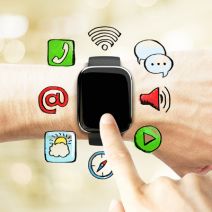 Wearable technology isn’t a new concept, but lately it’s been exploding in popularity. People love the fact that they can use their watch to perform various features that a smartphone can accomplish, and they enjoy how their workouts can be monitored by various health sensory-type devices. However, is this obsession with wearable technology going to amount to anything, or will it be a notorious flop?
Wearable technology isn’t a new concept, but lately it’s been exploding in popularity. People love the fact that they can use their watch to perform various features that a smartphone can accomplish, and they enjoy how their workouts can be monitored by various health sensory-type devices. However, is this obsession with wearable technology going to amount to anything, or will it be a notorious flop?
 Technology has the potential to make the future of your business a success. Although, if you don’t manage your company’s technology properly, it can hinder your business, causing you to miss out on future success. In order to take full advantage of what technology can do for you, you’ll have to keep the future in mind.
Technology has the potential to make the future of your business a success. Although, if you don’t manage your company’s technology properly, it can hinder your business, causing you to miss out on future success. In order to take full advantage of what technology can do for you, you’ll have to keep the future in mind.
 When it seems like every idea has already been patented or brought to fruition, that’s a key indicator that innovation in your company is lacking. Traditionally, advancements in business technology have driven innovation for companies. If your company’s innovation well is running dry, then there are measures that your business can take to become more innovative.
When it seems like every idea has already been patented or brought to fruition, that’s a key indicator that innovation in your company is lacking. Traditionally, advancements in business technology have driven innovation for companies. If your company’s innovation well is running dry, then there are measures that your business can take to become more innovative.
 In a world where time is a luxury that the average business owner lacks, it can be burdensome to come up with new technology initiatives. The main issue that this presents is that it can be difficult to improve your operations if your technology’s growth is stunted. Stagnate technology deployment can be detrimental to your business’s success.
In a world where time is a luxury that the average business owner lacks, it can be burdensome to come up with new technology initiatives. The main issue that this presents is that it can be difficult to improve your operations if your technology’s growth is stunted. Stagnate technology deployment can be detrimental to your business’s success.
 Entertainment has grown so synonymous with smartphones and technology that it’s almost impossible to think about these innovations without considering their entertainment value. Virtual reality augmentation, while slightly different, is an emerging technology that brings elements of virtual space to the lives of everyday users. So, how does virtual reality work, and can it be used for more than just entertainment purposes?
Entertainment has grown so synonymous with smartphones and technology that it’s almost impossible to think about these innovations without considering their entertainment value. Virtual reality augmentation, while slightly different, is an emerging technology that brings elements of virtual space to the lives of everyday users. So, how does virtual reality work, and can it be used for more than just entertainment purposes?
 In 1965, the technological landscape was much different from what we see now. The idea of having a small computer in your pocket in the form of a smartphone was but a distant dream. Now, it’s commonplace for all but the youngest of children to have a smartphone. How is this possible? Well, it’s all thanks to Moore’s law, which has led the development of new technology for the past 50 years.
In 1965, the technological landscape was much different from what we see now. The idea of having a small computer in your pocket in the form of a smartphone was but a distant dream. Now, it’s commonplace for all but the youngest of children to have a smartphone. How is this possible? Well, it’s all thanks to Moore’s law, which has led the development of new technology for the past 50 years.
 Is your wireless router an older model? If it is, then you owe it to yourself to upgrade the latest model. Depending on your Internet connection, upgrading your wireless router may be the easiest way to increase your bandwidth. Next-gen routers also come with new easy-to-use security features that don't require passwords, making an upgrade worth the effort.
Is your wireless router an older model? If it is, then you owe it to yourself to upgrade the latest model. Depending on your Internet connection, upgrading your wireless router may be the easiest way to increase your bandwidth. Next-gen routers also come with new easy-to-use security features that don't require passwords, making an upgrade worth the effort.
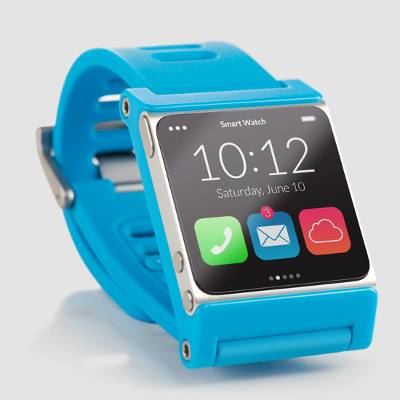 Wearable technology has dominated the tech headlines lately, and for good reason. The concept of having smart technology so easily accessible at any time is an attractive feature for many people. Some are patiently waiting for the public release of Google Glass later this year, along with many more attractive wearable technology options being released including Google's Android Wear.
Wearable technology has dominated the tech headlines lately, and for good reason. The concept of having smart technology so easily accessible at any time is an attractive feature for many people. Some are patiently waiting for the public release of Google Glass later this year, along with many more attractive wearable technology options being released including Google's Android Wear.
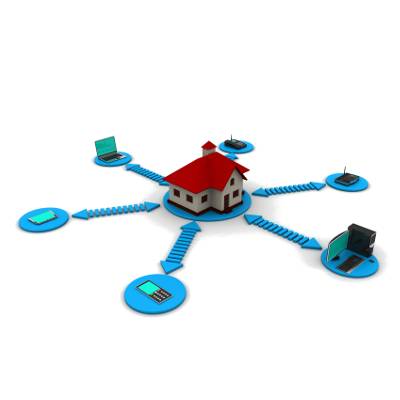 Technological and smart device leviathan, Samsung, has announced its plan to turn homes into smart hubs with its Android mobile devices controlling the action. Samsung is already at the forefront of the smartphone and smart TV market, but it also manufactures other products such as refrigerators, washing machines, and air conditioners. Now it has created a way for all of them to speak to one another.
Technological and smart device leviathan, Samsung, has announced its plan to turn homes into smart hubs with its Android mobile devices controlling the action. Samsung is already at the forefront of the smartphone and smart TV market, but it also manufactures other products such as refrigerators, washing machines, and air conditioners. Now it has created a way for all of them to speak to one another.
 In a digital age where nothing seems to be private or secure, no matter what steps you take, comes hope with a technology called LiFi. What is LiFi? Put simply, it's a new way for digital information to be passed through spectrums of visible light. It's very fast, at 10 gigabytes per second; currently more than 250 times faster than the fastest broadband connection!
In a digital age where nothing seems to be private or secure, no matter what steps you take, comes hope with a technology called LiFi. What is LiFi? Put simply, it's a new way for digital information to be passed through spectrums of visible light. It's very fast, at 10 gigabytes per second; currently more than 250 times faster than the fastest broadband connection!
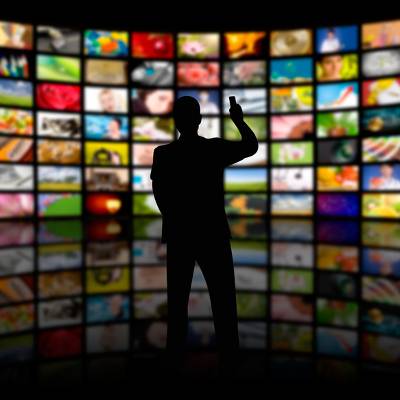 The way media is being consumed by people has been changing rapidly for over 100 years. More and more, people are relying on a tablet or smartphone to watch movies, listen to music, and read periodicals and books. This particular change in technology is just one of many in the history of streaming media.
The way media is being consumed by people has been changing rapidly for over 100 years. More and more, people are relying on a tablet or smartphone to watch movies, listen to music, and read periodicals and books. This particular change in technology is just one of many in the history of streaming media.
 Google is so entrenched in the culture of the planet that we no longer say, "Search for it", instead, we say, "Google it." Most of us use Google products on a daily basis that go beyond its search engine. From tablets and smartphones running Android, to Google's Chromebook running Chrome OS, Google is directly competing with Microsoft and Apple for the world's business and affection.
Google is so entrenched in the culture of the planet that we no longer say, "Search for it", instead, we say, "Google it." Most of us use Google products on a daily basis that go beyond its search engine. From tablets and smartphones running Android, to Google's Chromebook running Chrome OS, Google is directly competing with Microsoft and Apple for the world's business and affection.
 Working in the IT industry means embracing change and the latest technology trends. Doing the same thing day-in and day-out is a luxury we don't have, and frankly, sounds kind of boring. Since computers were first invented, there's been a need to service them. Here's a look at how the IT service industry has changed over the past 50 years.
Working in the IT industry means embracing change and the latest technology trends. Doing the same thing day-in and day-out is a luxury we don't have, and frankly, sounds kind of boring. Since computers were first invented, there's been a need to service them. Here's a look at how the IT service industry has changed over the past 50 years.
 With all the advancements in security technology, it's only a matter of time before clunky passwords are replaced with a more secure and more convenient solution. Unlocking your technology with a fingerprint reader is an easy and fun alternative that's being integrated with some of the latest devices; but how safe are fingerprint readers?
With all the advancements in security technology, it's only a matter of time before clunky passwords are replaced with a more secure and more convenient solution. Unlocking your technology with a fingerprint reader is an easy and fun alternative that's being integrated with some of the latest devices; but how safe are fingerprint readers?
 Do you let the batteries in your mobile devices fully deplete before recharging? If so, then you may be doing this based on some scientific-sounding advice you once heard. This advice has been around for years, and battery technology has dramatically advanced, which makes us ask the questions, "Is it still necessary to fully deplete your battery before recharging?"
Do you let the batteries in your mobile devices fully deplete before recharging? If so, then you may be doing this based on some scientific-sounding advice you once heard. This advice has been around for years, and battery technology has dramatically advanced, which makes us ask the questions, "Is it still necessary to fully deplete your battery before recharging?"
 Anybody who is a master of multitasking is a fan of YouTube. There's so much useful and entertaining content on YouTube that it's perfect for streaming media in the background while working on a project. Unfortunately, YouTube is a large application that eats up precious CPU resources and may slow down your computer.
Anybody who is a master of multitasking is a fan of YouTube. There's so much useful and entertaining content on YouTube that it's perfect for streaming media in the background while working on a project. Unfortunately, YouTube is a large application that eats up precious CPU resources and may slow down your computer.
 In a recent economics survey of small to medium-sized businesses by Oxford University, it was discovered that two-thirds of companies believe that technology is the key to transforming their business in order to "achieve longevity and sustainable growth." This survey reveals a lot about how businesses worldwide feel about technology. Does your business identify with any these trends?
In a recent economics survey of small to medium-sized businesses by Oxford University, it was discovered that two-thirds of companies believe that technology is the key to transforming their business in order to "achieve longevity and sustainable growth." This survey reveals a lot about how businesses worldwide feel about technology. Does your business identify with any these trends?
 Consider for a moment the computer you're using right now. Does it have wires? If so, how thick is the monitor you're using to view this? How many gigabytes is your hard drive? How many Microsoft Works documents could you have fit on your trusty 16-gigabyte USB thumb drive?Computing has certainly come a long way in the last four-plus decades; and it's getting exponentially better by the day.
Consider for a moment the computer you're using right now. Does it have wires? If so, how thick is the monitor you're using to view this? How many gigabytes is your hard drive? How many Microsoft Works documents could you have fit on your trusty 16-gigabyte USB thumb drive?Computing has certainly come a long way in the last four-plus decades; and it's getting exponentially better by the day.


